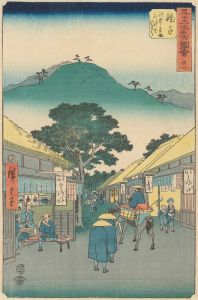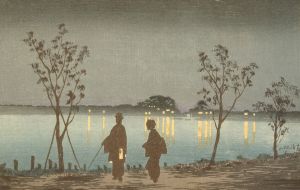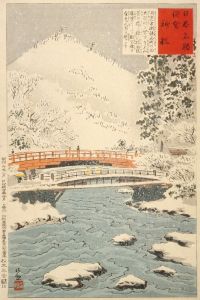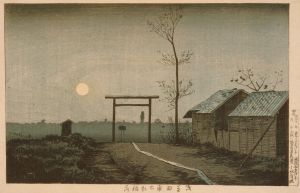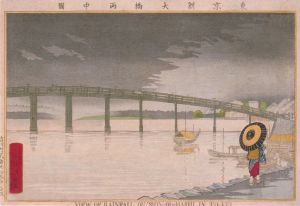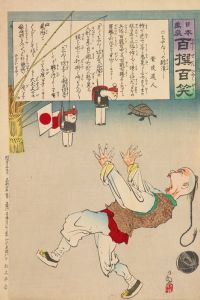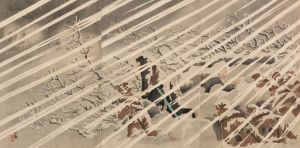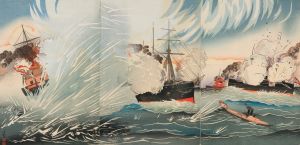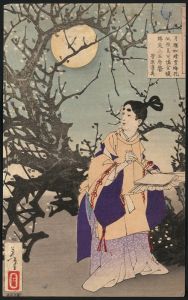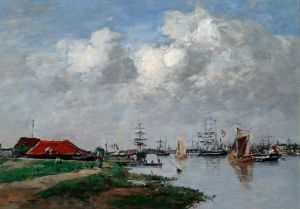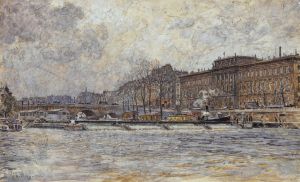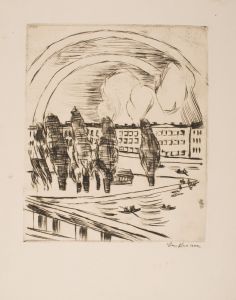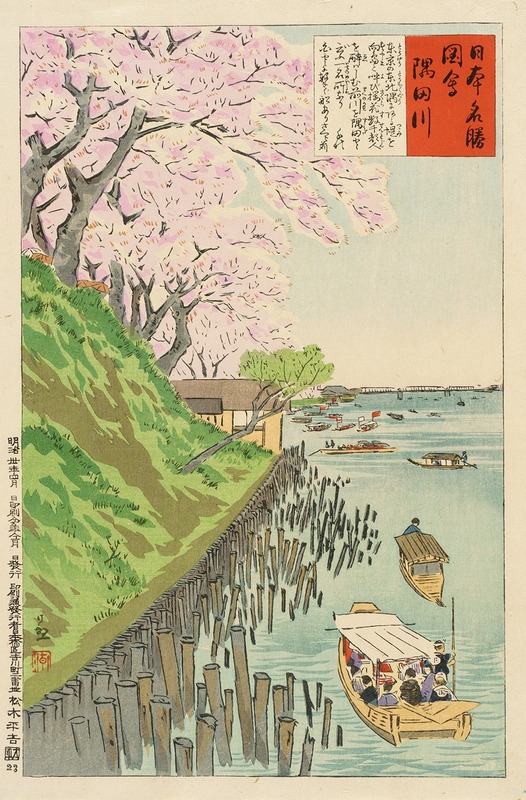
Sumida River
A hand-painted replica of Kobayashi Kiyochika’s masterpiece Sumida River, meticulously crafted by professional artists to capture the true essence of the original. Each piece is created with museum-quality canvas and rare mineral pigments, carefully painted by experienced artists with delicate brushstrokes and rich, layered colors to perfectly recreate the texture of the original artwork. Unlike machine-printed reproductions, this hand-painted version brings the painting to life, infused with the artist’s emotions and skill in every stroke. Whether for personal collection or home decoration, it instantly elevates the artistic atmosphere of any space.
Kobayashi Kiyochika (1847–1915) was a prominent Japanese artist known for his ukiyo-e woodblock prints and paintings, particularly during the Meiji era, a time of significant modernization and Western influence in Japan. One of his notable works is "Sumida River," which captures the essence of this transformative period through its depiction of a well-known location in Tokyo.
The Sumida River, flowing through Tokyo, has been a vital part of the city's history and culture, serving as a major transportation route and a scenic spot for both locals and tourists. Kiyochika's depiction of the Sumida River is part of his broader body of work that focuses on landscapes and urban scenes, reflecting the rapid changes occurring in Japan during the late 19th and early 20th centuries.
Kiyochika's style is often associated with the "shin-hanga" movement, which sought to revitalize traditional ukiyo-e art by incorporating Western techniques such as perspective and shading. His work is characterized by a unique blend of traditional Japanese aesthetics and Western influences, which can be seen in his use of light and shadow to create a sense of depth and atmosphere.
In "Sumida River," Kiyochika employs these techniques to capture the tranquil yet dynamic nature of the river. The artwork likely showcases the interplay of natural and man-made elements, a common theme in Kiyochika's work, highlighting the coexistence of traditional Japanese culture with the encroaching modernity of the Meiji era. The river itself, a symbol of continuity and change, serves as an ideal subject for Kiyochika's exploration of these themes.
Kiyochika's works, including "Sumida River," are noted for their atmospheric quality, often depicting scenes at dawn, dusk, or night, times when the interplay of light and shadow is most pronounced. This approach not only enhances the visual impact of his prints but also imbues them with a sense of mystery and introspection, inviting viewers to reflect on the passage of time and the fleeting nature of life.
The artist's focus on the Sumida River and other urban landscapes reflects his interest in documenting the transformation of Tokyo from a traditional Edo-period city to a modern metropolis. Through his art, Kiyochika provides a visual record of this pivotal era in Japanese history, capturing both the beauty and the tension of a society in transition.
Kiyochika's "Sumida River" is more than just a landscape; it is a historical document that offers insight into the cultural and social shifts of the Meiji period. His ability to blend traditional Japanese art with Western techniques makes his work a valuable contribution to the art world, bridging the gap between two cultures and offering a unique perspective on a rapidly changing Japan.
Today, Kobayashi Kiyochika's works, including his depiction of the Sumida River, are celebrated for their artistic innovation and historical significance. They continue to be studied and admired for their ability to capture the essence of a transformative period in Japanese history, offering a window into the past while remaining relevant to contemporary audiences.





